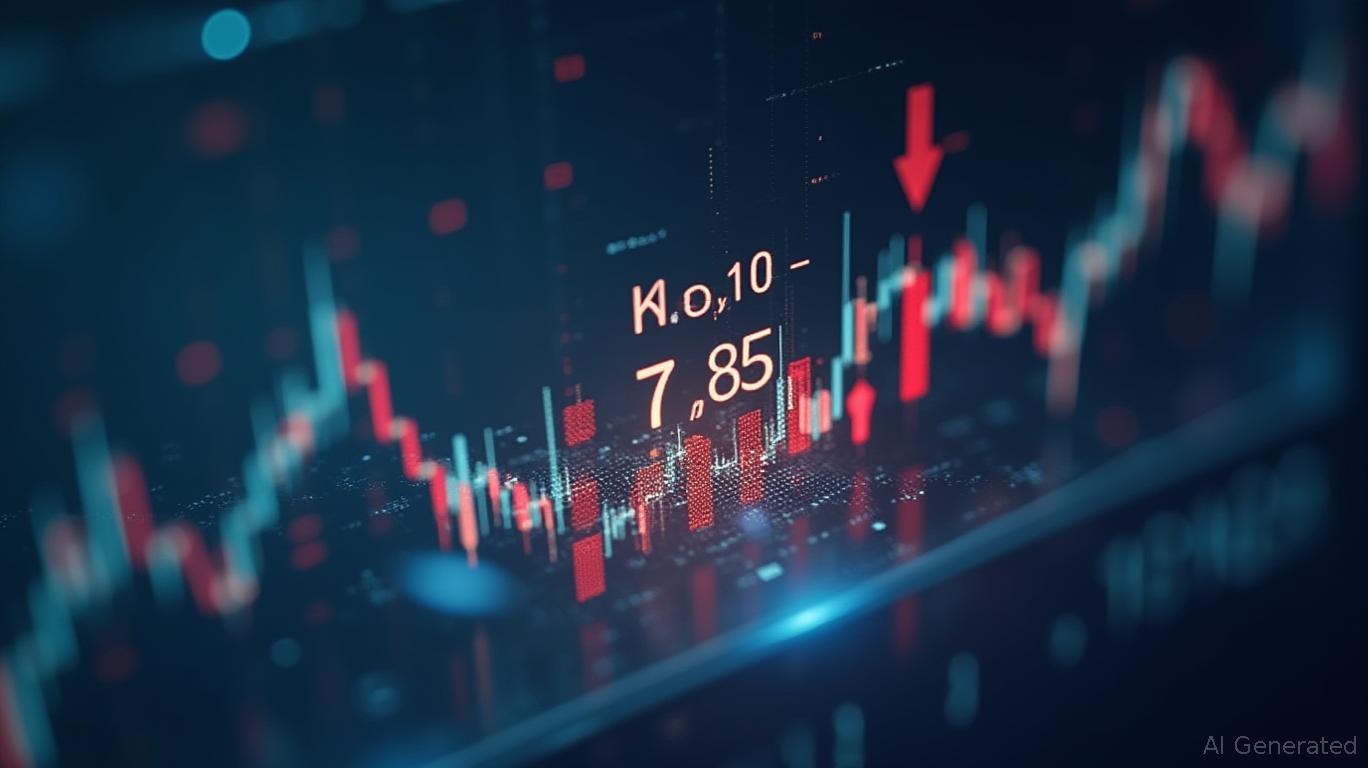Hong Kong Dollar's Fragile Peg and the Hidden Opportunities in Asian Markets
The Hong Kong Dollar (HKD) has crept perilously close to its 7.85 lower bound against the U.S. dollar, a threshold that has defined its pegged exchange rate regime since 1983. This proximity signals a critical
for Asian markets, as capital flows, interest rate differentials, and policy divergence between the U.S. Federal Reserve and Asian central banks create both risks and opportunities. For investors, the HKD's weakening trajectory offers a lens to analyze vulnerabilities in ASEAN currencies and identify plays in high-yield bonds and commodity-linked equities.
The HKD's Weakening: Carry Trades and Central Bank Dilemmas
The HKD's slide toward 7.85 stems from a widening interest rate gap with the U.S. dollar. The Federal Reserve's pause in rate hikes and market pricing of a potential 50-basis-point cut by year-end have reduced the allure of USD assets, while Hong Kong's interbank rates (Hibor) remain stubbornly elevated. As of June 2025, the 1-month Hibor stood at 3.58%, contrasting with U.S. Treasury yields at 4.25-4.5%. This has incentivized carry trades—borrowing in low-yielding HKD to invest in higher-yielding USD-denominated assets—exerting downward pressure on the HKD.
The Hong Kong Monetary Authority (HKMA) has intervened by selling U.S. dollars to prop up the HKD, reducing liquidity and pushing rates higher. This tightrope act highlights the fragility of the peg: further capital outflows could force the HKMA to drain liquidity further, risking a self-reinforcing cycle of rate hikes and economic strain.
Spillover Risks to ASEAN Currencies
ASEAN currencies like the Singapore Dollar (SGD) and Thai Baht (THB) are less directly exposed to the HKD's peg pressures but face indirect risks. A breach of the 7.85 threshold could trigger panic-driven capital outflows from Hong Kong, spilling into regional markets. Currencies tied to China's economy, such as the Indonesian Rupiah (IDR) or Malaysian Ringgit (MYR), might face depreciation pressures if investors flee emerging markets broadly.
However, not all ASEAN currencies are equally vulnerable. The SGD, backed by Singapore's robust reserves and managed float regime, is better positioned to withstand volatility. Meanwhile, the Philippine Peso (PHP) and Thai Baht (THB) could see greater pressure due to their reliance on tourism and trade with China. Investors should monitor the SGD/USD and THB/USD cross-rates as leading indicators of regional confidence.
Opportunities in High-Yield Bonds: The KHYB Play
The fragility of the HKD-USD peg creates opportunities in Asian high-yield bonds, particularly in sectors insulated from trade wars. The KraneShares Asia Pacific High Income Bond ETF (KHYB) holds issuers like Wynn Macau and Greentown China, which derive minimal revenue from U.S. exports. With a 10.3% trailing yield and a low correlation (0.3) to U.S. high-yield bonds, KHYB offers diversification in a market where Asian credit spreads remain tight but resilient to geopolitical shocks.
Investors should favor bonds from issuers with strong domestic demand ties, such as India's Vedanta Resources (exposed to global commodities) or Indonesian utilities. These bonds benefit from regional monetary easing and low default rates, even as U.S. defaults rise.
Commodity-Linked Equities: Indonesian Mining Stocks Shine
The HKD's weakness and potential USD strength could pressure commodity prices, but select sectors may thrive. Indonesian mining stocks, such as those in coal or copper, offer leverage to global demand for energy transition metals. Companies like Adaro Energy (ADRO) or Antam (ANTM) benefit from Indonesia's strategic mineral reserves and the country's push to industrialize.
While a stronger USD might weigh on commodity prices, a Fed rate cut could ease financing costs for miners and stabilize demand from Asian economies. Investors should pair these equities with long positions in SGD or short positions in MYR to hedge currency risks.
Policy Divergence: Riding the Fed's Back
The Fed's potential rate cut in Q3 2025 could narrow the U.S.-HK rate gap, easing pressure on the HKD. Asian central banks, however, face conflicting priorities: Singapore's MAS and Thailand's BOT may maintain stability through managed floats, while Indonesia's BI could allow the rupiah to depreciate to support exports.
Investors should favor Singapore-based financials like DBS Group (DS0.SI) or OCBC (12.OCT), which benefit from the SGD's stability and rising regional liquidity needs. These stocks offer dividends and exposure to ASEAN's digital banking boom, insulated from HKD-related volatility.
Positioning for Volatility
- Buy KHYB: Target a 7-9% yield in Asian high-yield bonds, focusing on domestic demand-driven issuers.
- Overweight Indonesian Mining Stocks: Look for companies with exposure to lithium or nickel, critical for EV batteries.
- Short MYR/SGD Pairs: Capitalize on the SGD's relative strength versus trade-exposed currencies like the ringgit.
- Hold Singapore Financials: Use DBS Group as a proxy for regional stability and dividend resilience.
Risks to Watch
- Peg Break: A collapse below 7.85 could trigger a broader Asian currency rout, spiking risk premiums.
- Fed Policy Miscalculation: If the Fed delays cuts, the HKD's pressure could intensify, worsening capital flight.
- Commodity Slump: A global recession could depress prices for Indonesian miners, despite their structural growth.
Conclusion
The HKD's proximity to its 7.85 lower bound is a harbinger of shifting capital flows and policy trade-offs across Asia. While risks abound, savvy investors can capitalize on high-yield bonds' yields and commodity stocks' leverage to growth. By pairing exposure to Singapore's financials with selective ASEAN equities, investors can navigate this volatile landscape—and profit from the HKD's precarious balancing act.

Comments
No comments yet